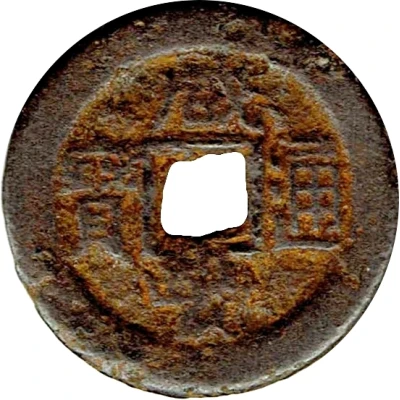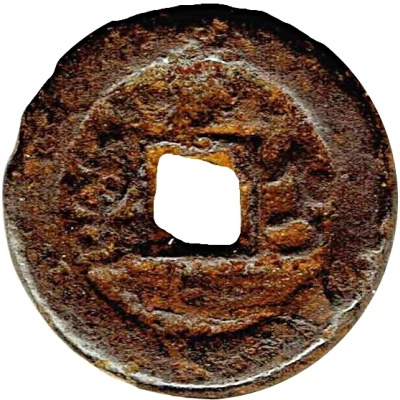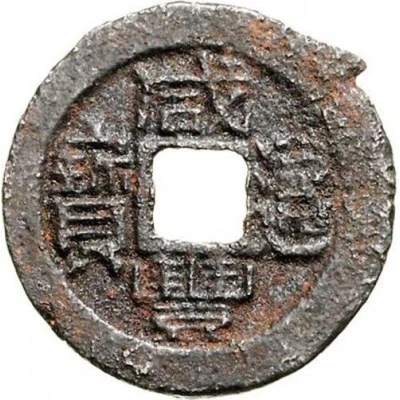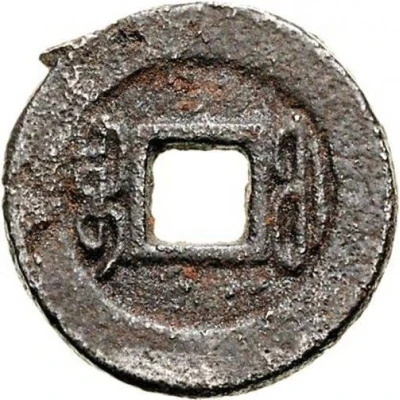


© Christopher Li (CC BY-NC-SA)
1 Cash - Xianfeng Tongbao; Boo-jyi; iron ND
| Iron | 4.12 g | 23 mm |
| Issuer | Empire of China |
|---|---|
| Emperor | Qing dynasty › Xianfeng (咸豐帝) (1850-1861) |
| Type | Standard circulation coin |
| Years | 1855-1859 |
| Value | 1 Cash |
| Currency | Cash (621-1912) |
| Composition | Iron |
| Weight | 4.12 g |
| Diameter | 23 mm |
| Thickness | 1.7 mm |
| Shape | Round with a square hole |
| Technique | Cast |
| Orientation | Medal alignment ↑↑ |
| Demonetized | Yes |
| Updated | 2024-10-04 |
| Numista | N#187072 |
|---|---|
| Rarity index | 90% |
Reverse
Two Manchu words (read vertically) separated by the hole.
Script: Mongolian / Manchu
Lettering: ᠪᠣᠣ ᡷᡳ
Translation: Boo-jyi
Edge
Plain
Comment
DocBaoFouErDocBooProt
Interesting fact
One interesting fact about the Xianfeng Tongbao iron coin is that it was produced during a time of economic turmoil in China, known as the "Taiping Rebellion," which lasted from 1850 to 1864. The coin was minted as a response to the shortage of copper, which was the traditional material used for coinage at the time. The use of iron as a substitute material was a significant departure from traditional Chinese coinage and reflects the resourcefulness and adaptability of the Chinese government during a time of crisis.

